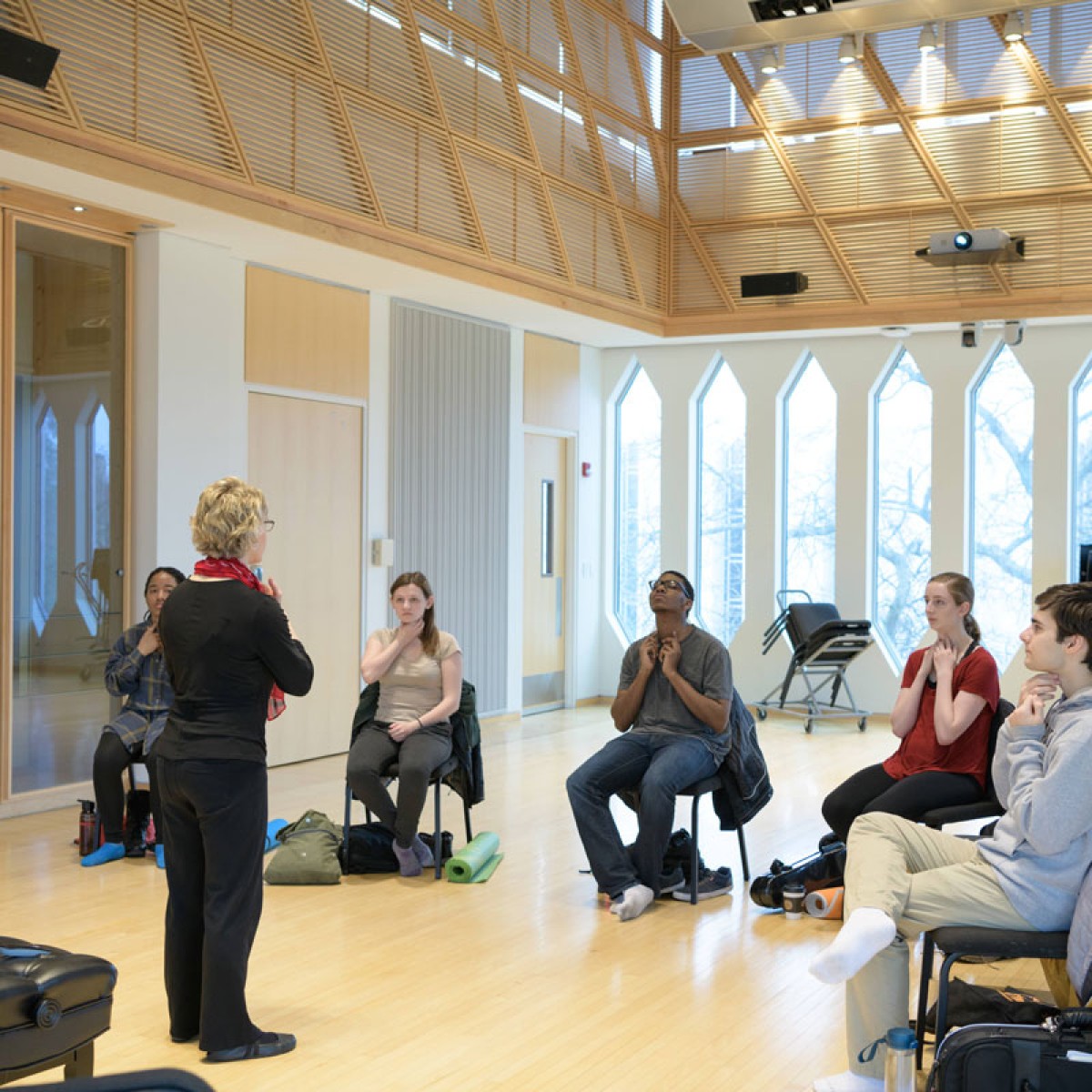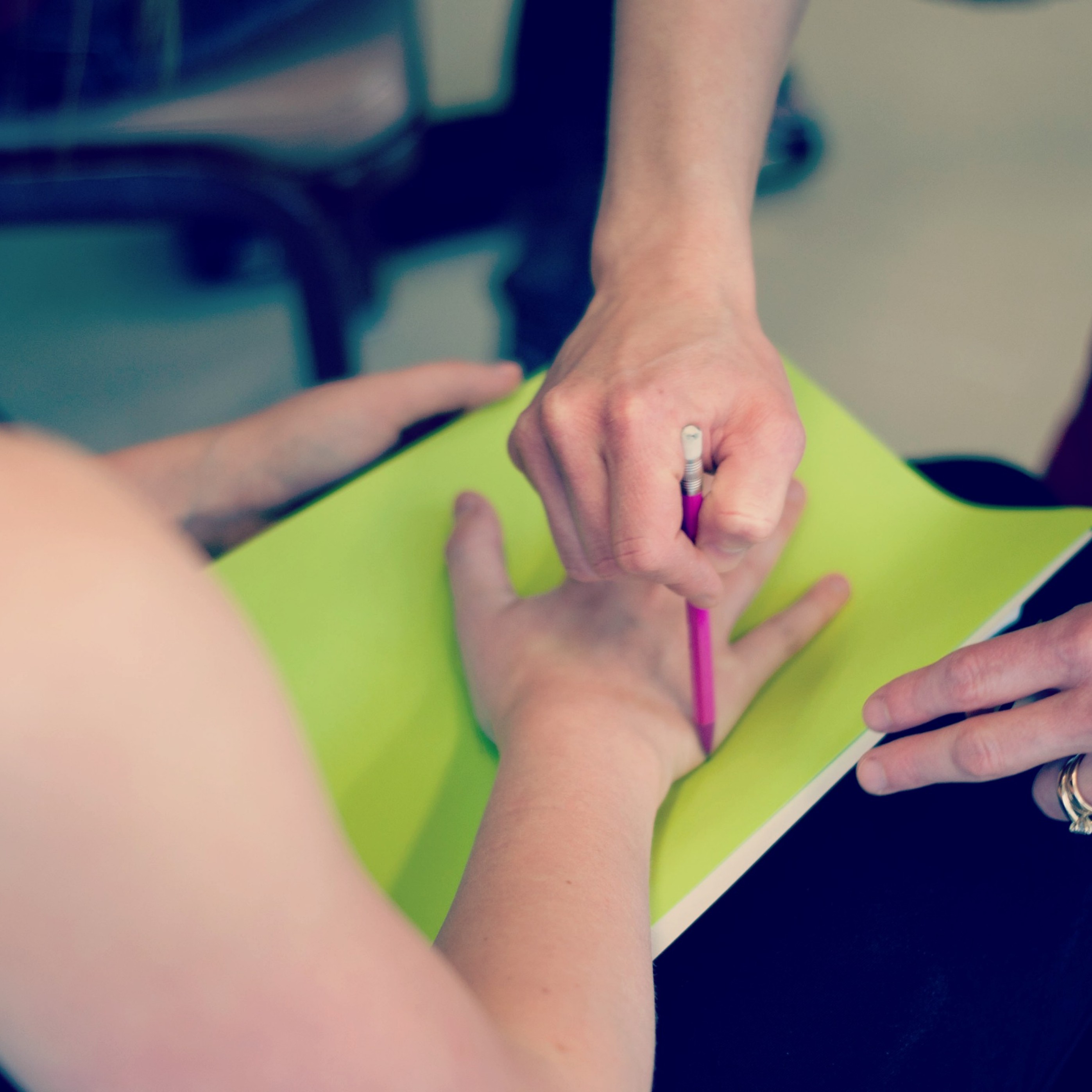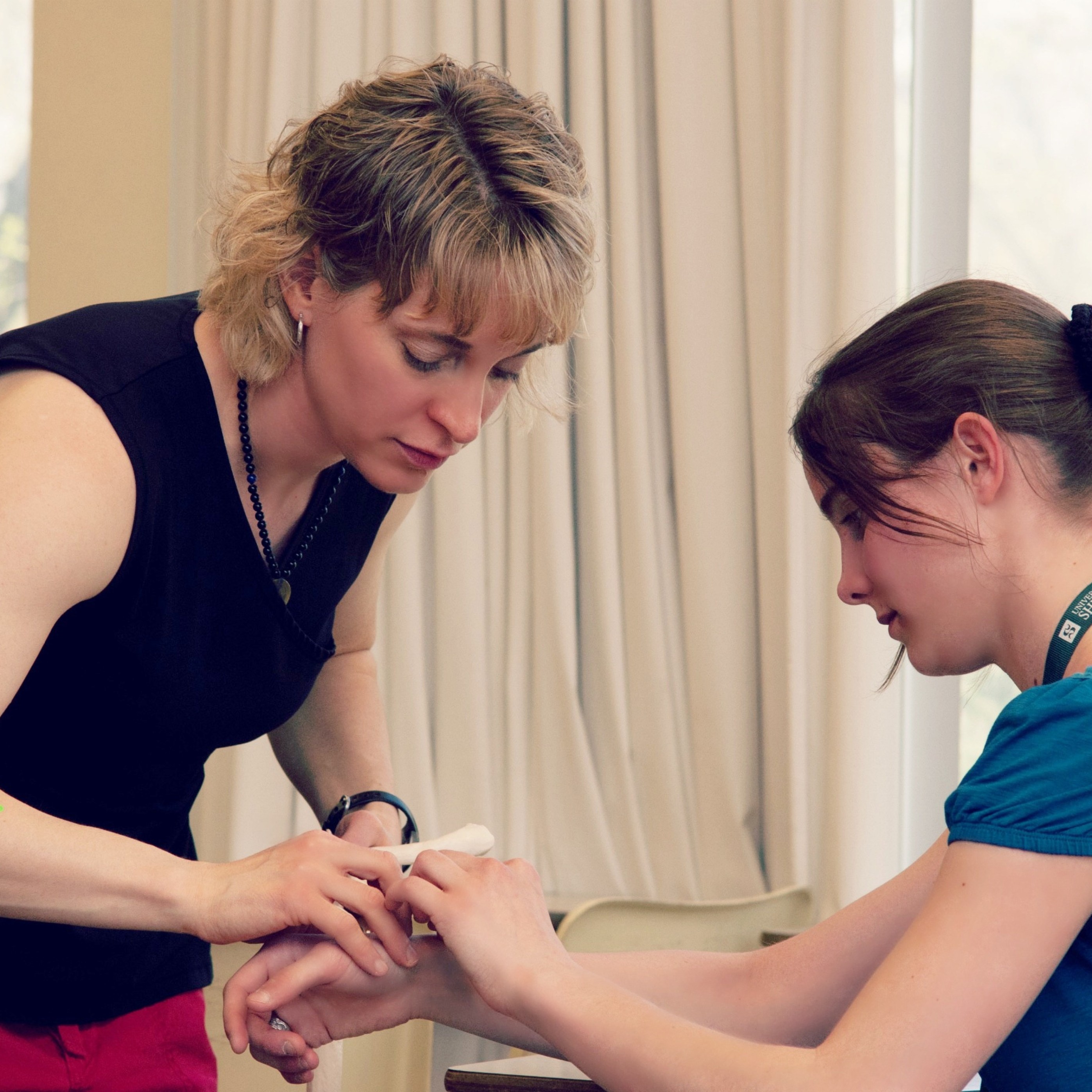
Movement Education
Body Mapping



Body Mapping is a tool that performers and teachers can use to enhance performance, maintain wellness, and prevent injury and discomfort.
Musicians move for a living. All of the sounds we make are produced by some sort of movement, yet most musicians are not taught how the body actually works in movement.
Music making is a whole body activity always, yet many musicians think only about their hands and their faces, ignoring the support from the spine and core of the body. Understanding the concept of “the part within the whole” is vital.
Understanding body maps, whole body movement, and awareness can work together to help decrease performance anxiety. Instead of actively repressing, ignoring, or hiding from the nervous symptoms, musicians can either bring their awareness back to their own bodies or extend their awareness to include more sensory input depending on the specific situation.
Body maps are our own internal representations that we have in our brain about how our bodies work. We have maps for our body’s size, function, and structure. When our body maps are accurate, movement is good. When our body maps are not accurate, then movement suffers. As we become aware of inaccurate body maps, we can correct them and movement improves as a result.
For example, many people do not realize that their whole arm structure includes a hand, wrist, forearm, elbow, upper arm, scapula, and clavicle. Many people have an initial arm map that is inaccurate because stops around the “shoulder” area and doesn’t include the scapula and clavicle. If you don’t understand how big your arm structure is or how it attaches to the rest of your skeleton, you may have some pain, discomfort, or limitation in your arm movement.
Once the anatomical truth is understood, the arm map can be corrected and refined. After the necessary time is taken to retrain movement, the movement will be better, which will lead to improved performance.
Perhaps, the most important concept, though, is that of awareness. Musicians can learn to be aware of what’s going on internally, while also being aware of what is happening in the external environment.
For many musicians, their awareness extends only the distance from their faces to their music stand. Musicians who cultivate their own awareness are then able to notice what’s happening during performance and can then make a choice to respond or not. It’s about choices and understanding that the musician, not the instrument, makes the choices. There is a specific movement or series of movements for each sound a musician makes, so it becomes a process of selecting the right movement tool for the job.
For musicians who are already dealing with injury, I know from personal experience that it is very easy to focus exclusively on the site of the injury and lose all awareness of the rest of the body. Regaining the whole body perspective is so important for retraining on the instrument. In many cases, poor movement choices can be uncovered that may or may not have contributed to the injury in the first place. These can be replaced by movements work with our anatomical design. Sometimes, the situation may require manual therapy in the form of NKT.
Places where I have taught Body Mapping:
“Here’s what people are saying about Body Mapping
Body Mapping is something all musicians could benefit from and is especially important information for teachers. Kelly shares the materials in a clear and concise way, creates a relaxed atmosphere, and makes learning it fun. Her knowledge of the topic is thorough and she has a good eye for deciphering an individual’s mapping difficulties. I recommend her highly!
Mary Kay Fink | Piccoloist, Cleveland Orchestra | Flute Instructor, Cleveland Institute of Music
Having a whole semester of Body Mapping with Kelly was an incredible opportunity. It was one of those classes that is immediately relevant the moment class ends and continues to be relevant for the rest of my life. My overall awareness of my body and its anatomy, of music making, and my observations of movement in myself and others was greatly expanded. I have been able to incorporate what I learned from Kelly into the teaching I do. I work to be part of the important ripple effect she inspires, one of expanded awareness and greater ease in playing for all musicians. The class she taught allowed us to integrate material in many different ways through journaling, discussing, reading, stretching, observing, experiencing etc. I was reminded of the importance of musical intention and having body mechanics serve that goal instead of vice versa. The concept is so simple, but I finally changed the order in which I approach learning a piece. I feel I am a much more rounded, intentional, and happy musician because of my semester in class with Kelly. Thank you!
Josephine S. | Violist, Oberlin Conservatory
Body Mapping Services
Private
Private sessions for musicians of all ages and abilities
Group
Group presentations of the six hour course What Every Musician Needs to Know About the Body®, as well as shorter, more condensed workshops for music educators, collegiate music education students, high school students and other groups of musicians.